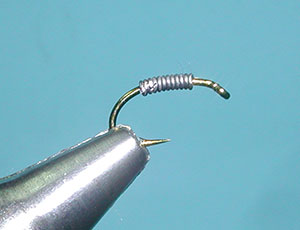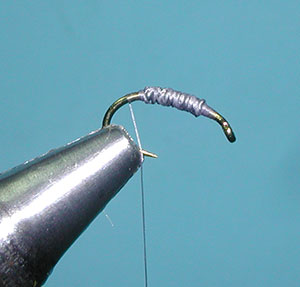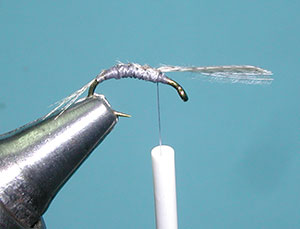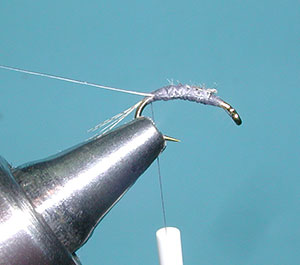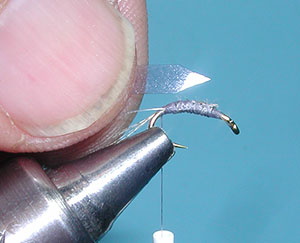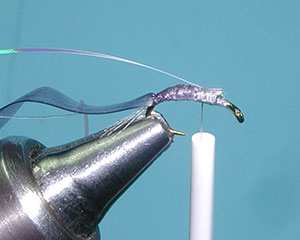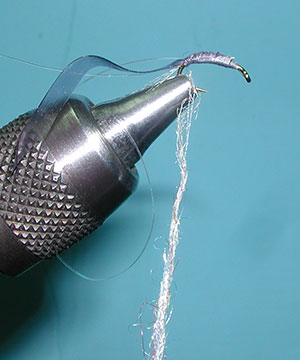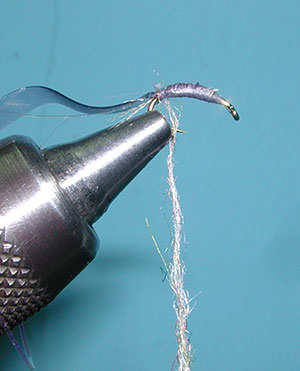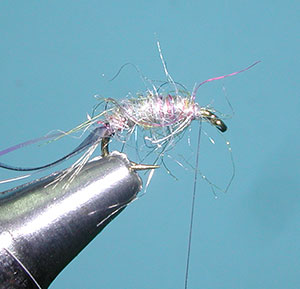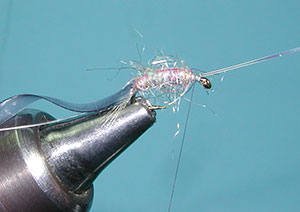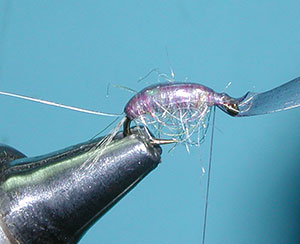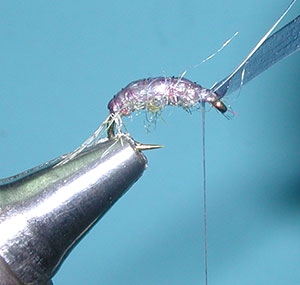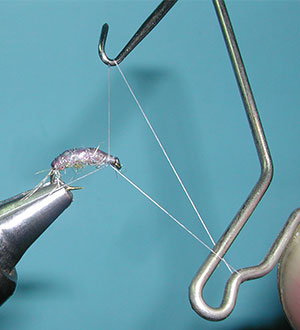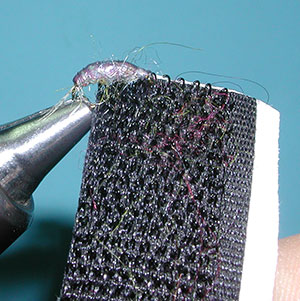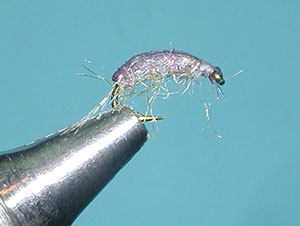Scud – an important food source
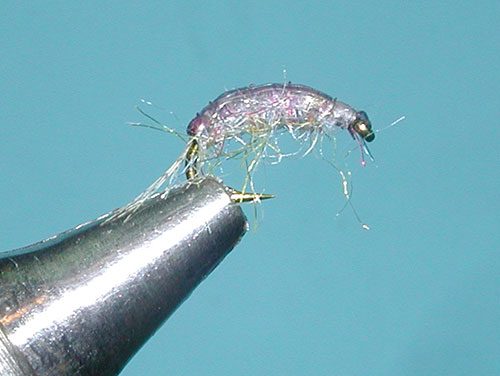
Gray-Olive Scud , Light
Tying Instructions
| Materials
to Order Material, click the link |
|
|---|---|
| Hook | TMC 2457 #16-20 |
| Thread | Veevus 14/0 Gray |
| Weight | 0.015 Leadfree wire |
| Body | Light Shade Rainbow Scud Dub |
| Shellback | Gray Scud Back with Pearl Flashabou underneath |
| Antennae | Mallard Flank fibers, Natural |
| Ribbing | Monofilament |
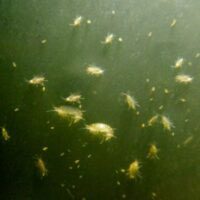

Randall Kaufmann
Scud
Scuds can be found in both lakes and streams. A scud is an aquatic crustacean with two pair of antennae, jointed legs, and visible segments along the abdomen. The pattern is generally attributed to Randall Kaufmann and is featured in his book “Tying Nymphs“. Randall mentions using the scuds for Golden Trout within the lakes of the John Muir Wilderness near French Canyon, which is just west of Bishop at 11,000′. Scuds are also very prevalent within Hot Creek as they prefer slow to moderate currents and plenty of aquatic vegetation.
Presentation
Large scuds of size 8-14 are usuallyGammarus, whereas the smaller scuds of 16-20 areHyalella. Generally, scuds should be fished with an indicator in slow-moving waters near banks and vegetation. Inspecting weedbeds along the shoreline will usually indicate the size and color of the scuds that are present. Most of the feeding of scuds take place beneath the surface and throughout the water column. Scuds are present year-round but Sierran trout tend to feed upon Hyaella scuds exclusively just before winter in sizes 16-18. It is also suspected that scuds play a major diet for the trout while overwintering in iced-over conditions.
Tailwaters and Spring Creeks
You tend to find more scuds in tailwaters and spring creeks, such as the Upper Owens and East Walker. Also look at the weedy edges along our Sierran lakes as the scuds will usually be present in water less than 15 feet deep. Try Gray-Olive, Tan, and Fluorescent Orange. Most of your natural scuds will be gray-olive. You might find Orange scuds within the trout’s stomach in which these were Gray-Olive scuds that turned Orange while being digested within the trout. Orange scuds also work well in the Spring when run-off brings dead scuds into the water column.
Parasites
When scuds molt, they tend to turn a tan coloration just before molting. Trout will key on these tan colorations as the shell is soft and easier to eat. Another trigger coloration is when the scud gets infected by a parasite called, Acanthocephalan. The parasite is orange in color and is often ingested by scuds. The parasite takes residence in the middle of the scuds back and matures into an orange spot recognized by trout. For some odd reason the parasite also alters the scuds behavior so that it is attracted to light when disturbed and flees to the surface. Not a really good idea when confronted by a trout. Scuds can be weighted either with lead wraps around the hook shank or with Beads.
Variations
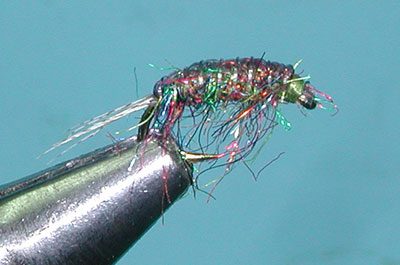
Gray/Olive Scud, Dark
| Hook | TMC 2457 #16-20 |
| Thread | Veevus 14/0 Olive |
| Weight | 0.015 Leadfree wire |
| Body | Dark Shade Rainbow Scud Dub |
| Shellback | Gray Scud Back with Pearl Flashabou underneath |
| Antennae | Mallard Flank fibers, Natural |
| Ribbing | Monofilament |
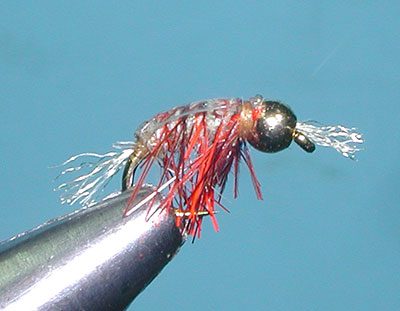
Beadhead Tan Scud
| Hook | TMC 2457, #14-20 |
| Thread | Veevus 14/0 Tan |
| Weight | Gold Brass Bead |
| Body | Olive Dun Haretron |
| Shellback | Clear Scud Back |
| Legs | Palmered Orange Grizzly Hackle |
| Antennae | Tan Antron Yarn fibers |
| Tail | Tan Antron Yarn fibers |
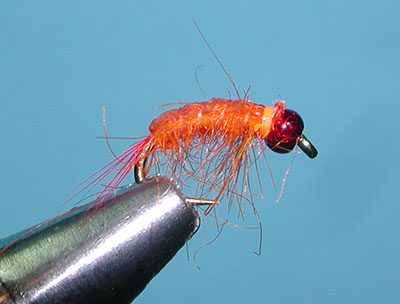
Beadhead Orange Scud
| Hook | TMC 2457 #14-20 |
| Thread | Veevus 12/0 Fl. Orange |
| Weight | 3/32 Metallic Red Tungsten Bead |
| Body | Hot Orange Angora Goat |
| Shellback | Orange Scud Back with Pearl Flashabou underneath |
| Antennae | Red Hackle Fibers |
| Ribbing | Monofilament |
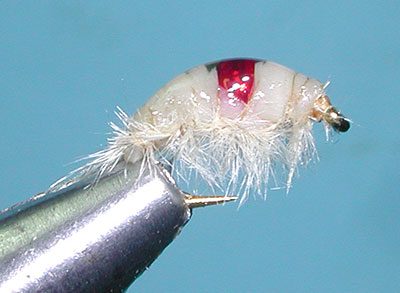
Infected Scud
| Hook | TMC 2457 #14-20 |
| Thread | Veevus 14/0 Tan |
| Body | Kiley Nymph Skin, Natural Latex |
| Shellback | Loon UV Fly Finish, Thick |
| Antennae | Tan Antron Yarn fibers |
| Legs | Ostrich Herl, Tan |
| Infection Spot | Plummeting Tungsten Bead, Metallic Red |

